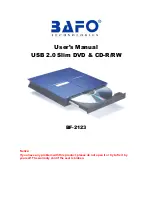
7-03 Speed PID Integral Time
Range:
Function:
Size
related
*
[1.0 - 20000
ms]
Enter the speed controller integral
time, which determines the time
the internal PID control takes to
correct errors. The greater the error,
the more quickly the gain increases.
The integral time causes a delay of
the signal and therefore a
dampening effect and can be used
to eliminate steady-state speed
error. Obtain quick control through
a short integral time, though if the
integral time is too short, the
process becomes unstable. An
excessively long integral time
disables the integral action, leading
to major deviations from the
required reference, since the
process regulator takes too long to
regulate errors. This parameter is
used with
[0] Speed open loop
and
[1] Speed closed loop
control, set in
parameter 1-00 Configuration Mode
.
7-04 Speed PID Differentiation Time
Range:
Function:
Size
related
*
[0 - 200 ms]
Enter the speed controller differen-
tiation time. The differentiator does
not react to constant error. It
provides gain proportional to the
rate of change of the speed
feedback. The quicker the error
changes, the stronger the gain from
the differentiator. The gain is
proportional with the speed at
which errors change. Setting this
parameter to 0 disables the differ-
entiator. This parameter is used
with
parameter 1-00 Configuration
Mode
[1] Speed closed loop
control.
7-05 Speed PID Diff. Gain Limit
Range:
Function:
5
*
[1 - 20]
Set a limit for the gain provided by
the differentiator. Consider limiting
the gain at higher frequencies. For
example, set up a pure D-link at
low frequencies and a constant D-
link at higher frequencies. This
parameter is used with
parameter 1-00 Configuration Mode
[1] Speed closed loop
control.
7-06 Speed PID Lowpass Filter Time
Range:
Function:
Size
related
*
[0.1 - 100
ms]
NOTICE
Severe filtering can be
detrimental to dynamic
performance.
This parameter is used with
parameter 1-00 Configuration
Mode
[1] Speed closed loop
.
Set a time constant for the speed
control low-pass filter. The low-pass
filter improves steady-state
performance and dampens
oscillations on the feedback signal.
This is an advantage if there is a
great amount of noise in the
system, see
. For
example, if a time constant (τ) of
100 ms is programmed, the cut-off
frequency for the low-pass filter is
1/0.1 = 10 RAD/s, corresponding to
(10/2 x π) = 1.6 Hz. The PID
regulator only regulates a feedback
signal that varies by a frequency of
less than 1.6 Hz. If the feedback
signal varies by a higher frequency
than 1.6 Hz, the PID regulator does
not react.
Practical settings of
parameter 7-06 Speed PID Lowpass
Filter Time
taken from the number
of pulses per revolutions from
encoder:
Encoder
PPR
Parameter 7-06 Speed
PID Lowpass Filter
Time
512
10 ms
1024
5 ms
2048
2 ms
4096
1 ms
Table 4.16 Speed PID Lowpass
Filter Time
Parameter Descriptions
VLT® AutomationDrive FC 361
88
Danfoss A/S © 03/2019 All rights reserved.
MG06J202
4
4
Содержание VLT AutomationDrive FC 361
Страница 2: ......
















































